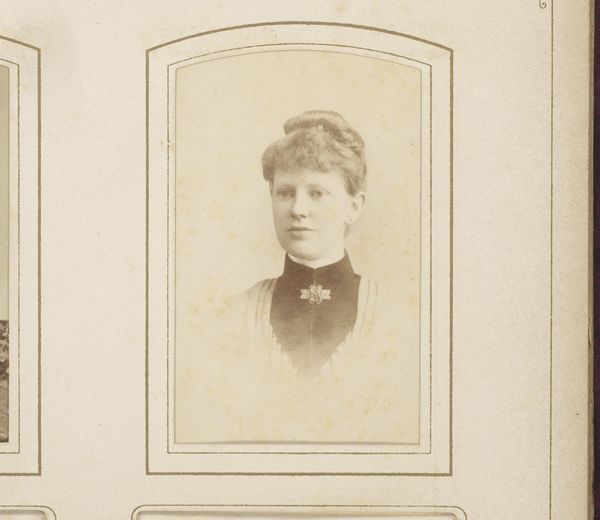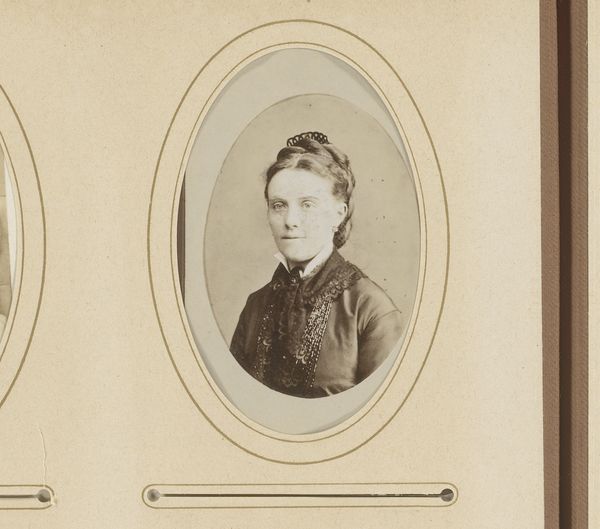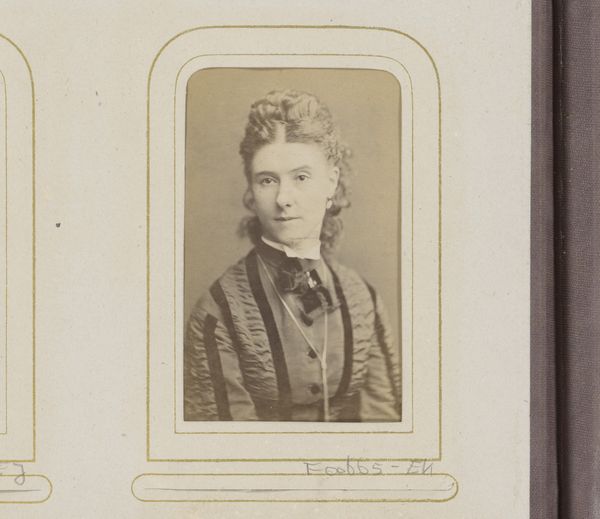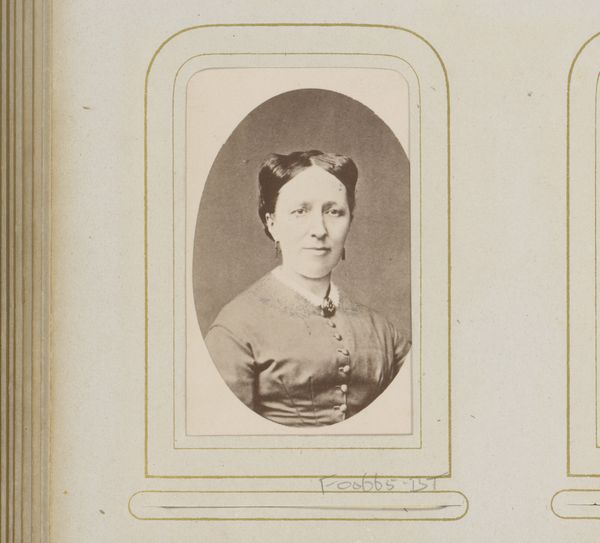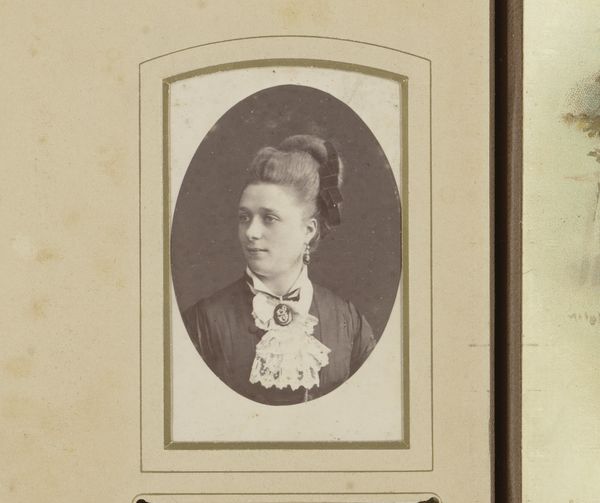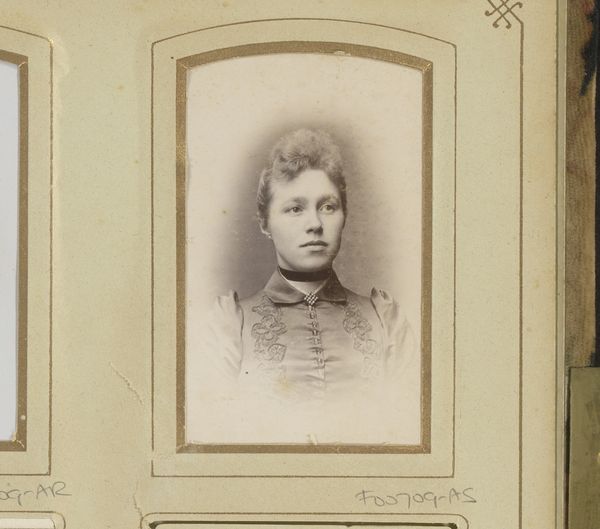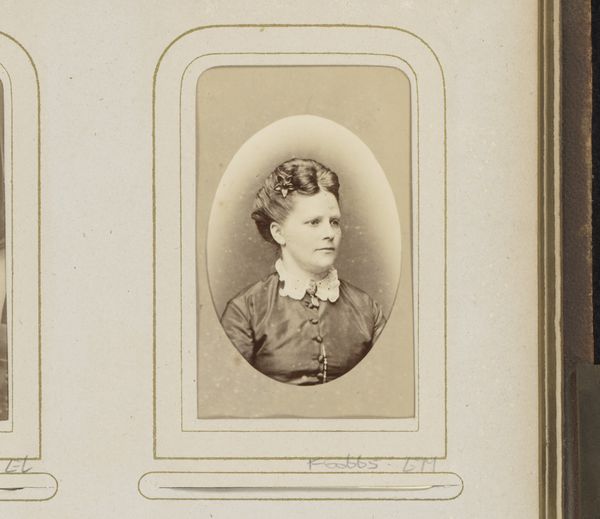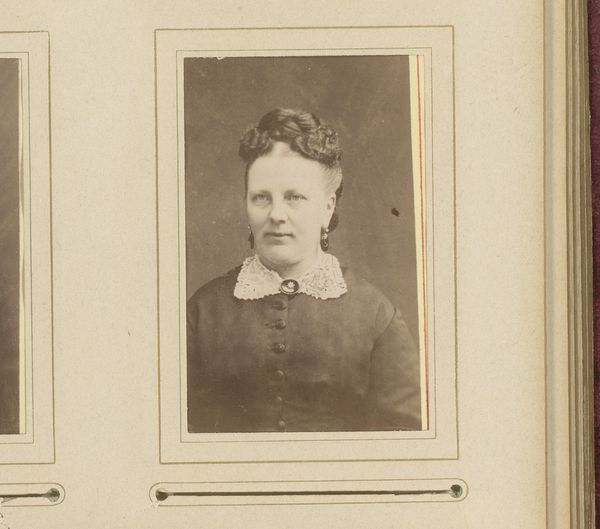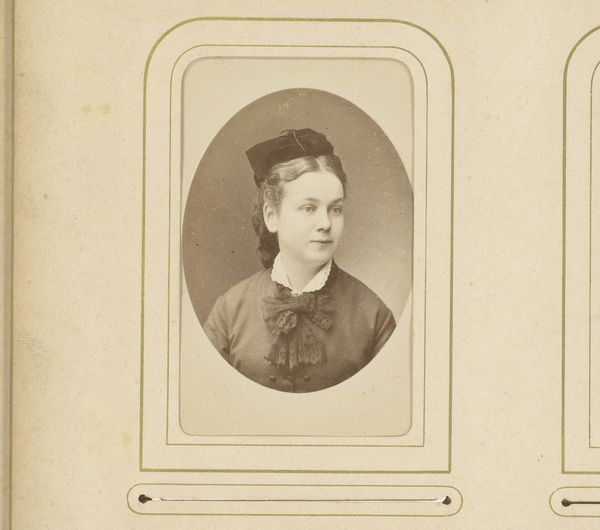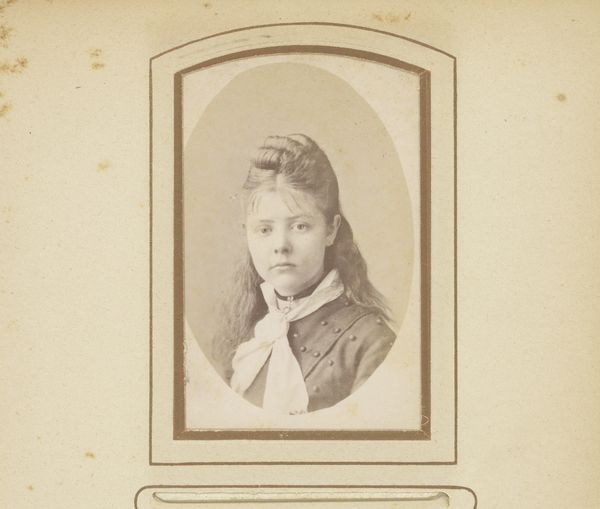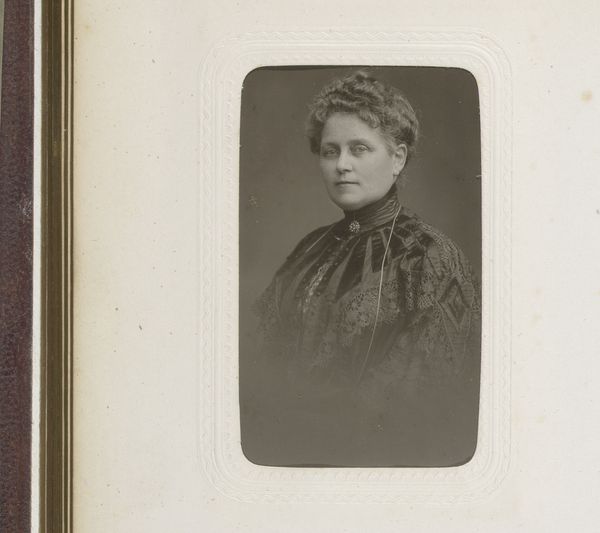
photography, gelatin-silver-print
#
beige
#
portrait
#
aged paper
#
toned paper
#
earth tone
#
parchment
#
photography
#
brown and beige
#
yellow element
#
gelatin-silver-print
#
warm-toned
#
golden font
#
gold element
Dimensions: height 85 mm, width 51 mm
Copyright: Rijks Museum: Open Domain
Editor: This gelatin silver print, "Portret van een vrouw met halsketting en vlecht in het haar" was taken around 1865. I am really struck by the formality and the slightly melancholic mood of the subject. How do you interpret this portrait? Curator: Well, it’s fascinating to consider how photography, still relatively new at the time, participated in shaping notions of identity and representation, particularly for women. Who gets to be seen, how are they seen, and who is doing the seeing? What can the sitter's attire and adornments tell us about their social position or aspirations? Editor: So, you’re saying the photograph acts as both a record and a constructed image? Curator: Precisely! The woman's modest yet stylish attire – the necklace, the neatly braided hair – suggests a certain middle-class respectability. But the slightly faded quality of the print, its sepia tones, evokes a sense of distance, both temporal and emotional. What's compelling to consider is whether she had agency in how she was being represented. Who chose the framing, the attire? These may seem like small things but they determine how future viewers like us perceive this individual. Does it feel like we really "know" her, or only what the photographer wanted to show us? Editor: That makes me rethink my initial feeling of melancholy. Maybe it's a kind of quiet resistance? Or perhaps the picture simply captures a moment in time, devoid of any specific message. Curator: Perhaps, and that’s part of the power of engaging with historical images; they force us to confront the limitations of our own perspectives, question historical narratives, and to acknowledge the complexities of representation and identity. We cannot really know her but we are able to appreciate her humanity, and her presence frozen in time. Editor: I’m certainly looking at this picture in a new light now. Thanks for offering that historical context, it really reframes the image.
Comments
No comments
Be the first to comment and join the conversation on the ultimate creative platform.
